|
There are so many great drawing challenges that happen each year and often I find out about them too late! So I have created a list of challenges below so you don't miss out! In the first week of January I took part in a lovely art challenge, 'Cats in the Garden'. Each day there was a different prompt. Challenges like this are hosted by @TheyDrawAndGarden often and are so fun to participate in. Day 1 Day 4 Day 6 Day 7 I don't always have time to do every single day in a challenge, so I might just share some work that I've already finished. If you're interested in doing illustration challenges, here are some great ones that happen at different times during the year.
Ongoing Challenges:
Annual Challenges by month:
0 Comments
If you want to illustrate your own picture book or are thinking about taking on an illustration project, here are some things to consider to help you quote accurately, plan efficiently, and have a lovely finished product. 1. Time The most important thing I learned is that illustrating an entire book is a time consuming project. However long you think it will take, it'll probably take 50-100% longer. We always overestimate how much we can get done, and this project was no exception. Generally picture books are 32 pages including the end pages. That's a lot of pictures! I worked on the book in between other projects and spread the work out over about 12 months.
3. Continuity When working on one-off illustrations, continuity isn't a thing. But a book is one, cohesive work, so the artwork has to be cohesive. One of the important factors in achieving this continuity is the colour scheme. The other obvious one is the style of illustration. The third element is a bit trickier - keeping the characters consistent. This means that the little girl (pictured above) looks like the same little girl on all the pages. Whether she is facing side on or front on, happy, sad, laughing; she needs to look like the same person. She also needs to look the same age. This means getting the facial features just right can be pretty time consuming. You may notice that characters sometimes have the same clothing throughout a book. This helps us quickly identify them as we read. It helps with continuity. In Mummy's Midwife, I wanted Harper to have lots of different outfits because little girls often love playing dress-ups. This meant I introduced other elements to help her look the same. She always has pigtails and a clip. 4. Revisions/Art direction Circling back to 'Time', there will be a number of revisions that need to be made at several stages throughout the project. From composition, to character tweaks, to colour changes. Communication is key as well as being a good project manager. It is important that you seek feedback at each stage and incorporate it before moving forward. It also needs to be made clear that once that project stage is complete, it is done. When working with traditional media, changing all the colours after painting isn't really an option, unless the budget is altered to allow for a full repaint. 5. File setup It's really important to know the book format from the outset. What size and orientation will it be? Also, what format will the artwork be required in order to be integrated with the rest of the book? Will it need to be converted to CMYK or will the Printer convert from RGB? You might need to leave a certain allowance/overflow around the edge for trimming (called a bleed) and you may need to allow for the gutter (where the binding/stapling happens) I set up my colour roughs at 300dpi in procreate so I could print them out fuill size. I then painted a double spread on an A3 page. I then scanned at 600 or 800 dpi to ensure I'd have the correct page size at 300dpi (print quality). Depending upon your arrangement, someone else might scan and clean up the artwork. But on a small project you would likely be doing that. Ensure you discuss this and quote accordingly. Seeing the artwork come together with the text and full layout is a real milestone. Ideally you will see a proof so you can liaise with the book designer/client about any tweaks that are needed to colours or vignetting around artwork. Illustrating a book has been a challenging and incredibly rewarding project. Whether you are planning to illustrate you own book or have been asked to work on someone else's, hopefully this article helps you consider some of the important factors for success.
Have experiences you'd like to share? I'd love to hear about them below.
With that out of the way, I'm giving you 3 fun ways to spark your creativity and get painting. I even have a list of ideas for you! Use this technique when you want to try something new in your journal or sketchbook. When you want to be inspired or challenged to try something new. It's also a great way to try all those new art materials that you haven't opened. Prompt picker #1
Prompt picker #2Write each idea on a small square of paper and fold them up. Keep your ideas in a nice jar. You can easily add new ideas to the jar as you think of them. You can even colour code them, as above, so you can quickly pick a subject and a colour, for example. Prompt picker #3If you love lists and option 1 and 2 just seem like hard work, use a random number generator (or a child!) to help you choose. Create your list of materials you want to try and objects you want to paint. Ideally number each row. Then simply plug in your total number of rows into the number generator and away you go.
Eyes on the PrizeOnline classes are wonderful and SO inspiring. Plus there are a lot of free ones too! But sometimes, when you are short on time, you need to spend that time doing, not watching someone else. After all, it's the practise that helps you learn. Don't fall down a YouTube rabbit hole to find that it's time to start dinner and you still have a blank page.
Free ideas list to get you started
I recently discovered the Room Portrait Club and have joined in with some of the challenges.
Room Portrait Club is a supportive, instagram community where artists complete a weekly portrait challenge using their chosen medium. A new image is posted each Saturday and artists from all over the world share their take on the room's portrait. What I love seeing is the variety of media! There is painting, of course, and sketching, but also collage, printmaking, assemblage and embroidery. It's really inspiring. Some portraits are realistic, whilst others are graphic and some artists choose to reinterpret or just depict a section of the photo. ​ Here's my room portrait from a few weeks ago. A gorgeous little shepherd's hut interior, complete with William Morris wallpaper!
I've been working on improving my perspective sketching and this image certainly challenged me.
​The image for the following week didn't inspire me as much, but I loved seeing the work of the other artists.
I LOVE this week's image, because of the colours. I didn't manage to squeeze it in before the deadline, but you can see my version below.
Be sure to check out #roomportraitclub on instagram.
If you are interested in joining in but don't know where to start, check out my online class where we paint a living room portrait with gouache and watercolour for our project. Printmaking is such a diverse discipline and a 'print' can mean lots of different things. Often you hear 'print' meaning giclee prints or digital reproductions of an original painting or illustration. Most of my works are dry point prints. Each one is made by hand, painted by hand and then signed and numbered - as they are limited edition. First, I start out by sketching my design until I'm happy with it. I then transfer my design onto illustration board, which will become my 'plate'. I cut out my plate, seal it with up to 6 coats of sealer, and then I etch all of the lines of my design into the plate with a sharp tool. My next step is to 'ink up' my plate ready for printing. The ink goes on and then the excess ink gets gently wiped off, leaving ink in the etched lines. This is the most time-consuming part of the process. When I'm happy with the plate, it goes onto the etching press. My paper goes on top and I hold my breath and wind it through the press. The prints are left to dry. To make the next print, I ink up and wipe off my plate again. Plates made in this way can only go through the press limited times and so each of my designs will be limited to /15 or /25 prints in an edition. When you see a number on the bottom of an artwork like: 2/25, that means it was the second print pulled in an edition of 25. U/S stands for Unique State and means that the print is unique, either due to ink colour, layout or the watercolours used. Once the print is dry, I paint it with artist quality watercolour paints. The colours that are mixed can never be recreated exactly, so each one has its own unique quality.
I love taking online classes. Victoria Johnson's are some of the better ones I've done. She provides succinct, useful information and then great briefs from which you can launch into new work. The classes aren't about learning techniques, but building concepts and ways of thinking. Her Create Collections class got me thinking about leveraging all the ideas I have to create a small series. This is far more efficient than creating five unrelated illustrations. I do love working this way, because sometimes I feel this need to include all my ideas in one design! I don't want to leave anything out. A series allows you to explore as many as your ideas as you want to. For this collection, I combined florals and something new to me - birds. It was great to take on a new challenge an fun to create some simple coordinates to fill out the mini-collection. These designs are all available for licensing.
I love painting and I also love surfing. So I love to combine the two wherever I can! Read on to learn how to create a cute paper doll with changeable outfits. Paper dolls are so nostalgic of our youth and have a long history. Your doll can be a mini-me or inspired by someone you know, or completely fictitious. Materials 300gsm watercolour paper or Bristol paper Watercolour, gouache or acrylic paints, coloured pencils or markers Paint brushes Scissors Pencil and eraser Tracing paper (or cheap oven paper) Waterproof fine-liner pen, like Unipin (optional) Light box or a bright window 1. Let’s start with the paper doll. If you enjoy drawing, draw a person freehand. You can stylise the body, face and hair. Or if that is stretching your skills too far, take a full length selfie, or snap a pic of your friend. Wear something figure hugging, or even your bikini. Your doll can have her hands by her sides, or strike a pose that you want your doll to hold, such as a hand on hip. 2. View the photo on a tablet or computer screen and zoom it to the size you want your finished doll to be. Then grab your trusty tracing paper, or oven paper, and lay it on your screen. Pressing gently, trace the important lines. Make sure you get the outline, plus simple lines for facial features and hands.  Black and white sketch and the finished doll. Keep facial lines simple. Black and white sketch and the finished doll. Keep facial lines simple. 3. If you like, draw a bikini on your doll, so she is still wearing something when she’s unclothed. When you are happy with your design, go over the pencil lines with the black pen, so it is easier to see. 4. Now that you have the doll, you can use this as a template for drawing the clothes. Tape your tracing paper with the doll to a light box or to a bright window. Carefully tape the edge of the watercolour paper over the top so you can see your doll through it. Now draw an outfit straight onto your watercolour paper, or draw it onto a fresh sheet of tracing paper if you’ll need a few goes to get it right. The outfit can be bigger and wider that the doll but not narrower. If your doll has its hand on its hip, you may need to include the hand on each new outfit. Once you finish an outfit, move the watercolour paper to align the doll with an empty spot so you can draw your next outfit. Drawing wetsuits are super easy. You could also draw your fave holiday outfit, swimmers and post surf kit, wintery clothes, and evening wear. 5. On each outfit, draw tabs that will fold over and hold the clothes onto the doll. They need to be long enough that they can wrap around. One on each shoulder and a couple near the waist or hips is usually enough. Why not draw some accessories, like your dream surfboard? 6. Using the window again, trace your doll onto watercolour paper. If your outfits are on tracing paper, transfer those too.
7. Paint the outfits using your preferred supplies. You can even use coloured pencils or markers, or a combination. You may like to ink the important details with the waterproof pen and erase your pencil marks before painting. When painting, wait for one area to dry before painting next to it. This will stop colours bleeding into each other. 8. When everything is dry, cut out your doll and outfits with a pair of small, sharp scissors. Don’t forget to keep the tabs attached! These paper dolls make wonderful gifts or keepsakes from an adventure. When you complete the project, share your paper doll with @mermaidscoin and #surfgirlpaperdolls on instagram. I joined Skillshare as a student about four years ago and I posted my first class - about combining watercolour and gouache - almost 2 years ago! Needless to say I have learned a lot since that first class. I wanted to share a valuable tip with you about using gouache. White is magic!
When I started teaching my first class, I didn't know these tips, but wanted to share them with you. If you are keen to learn more about wonderful gouache and ways to combine it with watercolour, I hope you'll check out my class. If you freak out about the idea of having no idea - I'm here to help you. I don't ever find myself with a shortage of ideas. In fact, I'm so time-poor that it is the least of my worries! First things first...So the first thing you should do is get an 'ideas notebook'. Keep all your notes and ideas in one place so you can dip back into it - you never know when that terrible idea might evolve into something fantastic. Now that you have a blank notebook you need to fill it with something! Here is a process I often use. The Pick & MixFirst, I do a brainstorm/ free word association around the prompt. For example: Flower. I write down everything that springs to mind for 'flower'. Write it down, even if the link is tenuous. Flower sunflower flowers in her hair delphiniums garden in bloom hot house flowers Spring Summer Roses Garden party florist flower arranging, repotting.... the list goes on and on. And it will be different for everyone. Here's another one: Potion potion bottle magic cauldron witch take your medicine ocean rhymes with potion emotion mystic midnight elixir ornate bottles herbs crystals love potion poison Some of these might already be generating vivid mental images for you. Great! Draw some quick thumbnail sketches if you want. But why, tho?Next, I have a think about the kinds of illustrations I might want to create. What is the purpose of this illustration/painting/print/drawing? Maybe I need some more patterns in my portfolio, or something for a greeting card with lettering. I choose one of these. Here's a quick list: Editorial illustration A collection of things A how to - instructional illustration Greeting card Lettering Children's Clothing Repeat pattern Product collection Something seasonal, like Valentine's or Christmas A present Make a Chunky ConnectionThe last step is to go back to my first list and see which of these talks to me and how many ideas I can 'chunk' together. Perhaps you decide to create a how-to infographic on 'how to prepare and arrange a bouquet of spring flowers'. Or maybe you create a greeting card with lettering and a lady with sunflowers in her hair. Or a repeat pattern with gardening elements inspired by repotting plants, like pots, seedlings, a trowel, and gloves. The combinations are endless! You can see from my second list that a whole pile of these ended up in the final painting: an ocean potion in a cork stoppered bottle with moonlight and stars. If there are any on-trend colours or trends (like crystals, flamingos, indoor plants) you can consider which of these might also fit your brief and your concept. The birth of an ideaAfter I complete this brainstorm process, then I'll likely start a Pinterest board to group reference images, colour ideas, and research.
My last step is to start sketching thumbnails to develop and refine the composition of my illustration. Not all of your ideas will be good ones and you'll probably have some good ones that you don't get to birth. But at least you won't be short of them! Keep all your planning and ideas in your notebook to refer to down the track. Sometimes a different state of mind spawns a whole new perspective. Let me know if this process helps you! If you have another process you like to use, why not share it in the comments? Happy designing!
Hey there! It's been a while. You know how it is. Keeping all the balls in the air and trying to have a social media presence is just too much sometimes.
After having a month long break from social media, I spent the last week having a lovely time painting new illustrations for an instagram art challenge 'Mystic Sun Week'. A bunch of great artists were involved and it was a nice chance to work to a deadline on something totally different. Each day had a different prompt to spark an illustration and everyone tagged their posts with #mysticsunweek. 1. Increase in Engagement
The insta algorithm shows 'interesting' content to more viewers. Higher engagement = interesting. So the more people that are liking and commenting on your post, the more people will actually see your posts. After a long break from insta, my engagement was non-existent. So taking part in a challenge was a great way to boost this engagement. All the participants used the same hashtag, and then would follow that hashtag to explore all the new work being created. So an online challenge means an engaged, captive audience!
2. Build your Portfolio
This online challenge ticked a couple of boxes for me. I loved the theme, plus it enabled me to get back onto instagram AND create some new work for my portfolio. I'll also make prints of my favourites to stock my Etsy shop. You could even pop your new work on Society6, RedBubble or another print on demand site.
You could create unrelated illustrations, or choose a colour scheme or motif to carry through the whole week so that you have a cohesive collection at the end! 3. Beat the Procrastination
I've had the best of intentions with the 100 days project over the last couple of years, but I don't think it is actually feasible for me at the moment with 2 young kids, juggling work and a side hustle - it just doesn't even make it onto my list of to-dos most days.
However, an online challenge that lasts a week is achievable for anyone if you have a bit of lead time. We are all prone to procrastination but done is better than perfect! A week long challenge is a great kick in the pants to just bang out some work and not be too precious or torn about what you create. It is really liberating! Plus posting every day keeps you accountable - you have to meet that deadline. 4. Connect with a Creative Community
A challenge is such a fab opportunity to connect with other artists, receive feedback about your work AND discover other artists you love! If you are lucky you even generate work from someone new seeing what you create. I often had a couple of colour variations for one project and would ask my audience which they preferred. This gave me some really useful feedback and meant my whole audience could share their opinion and vote.
5. Yoga for your Brain - Stretch Yourself
Most people would argue that it is heaps easier to create artwork about what you are loving right now. But what about when a client wants something that just doesn't float your boat? If you can get excited about it, you are likely to produce much stronger work.
Online challenge prompts a usually fairly broad. For Mystic Sun Week they were: Flower, Goddess, Sun Bath, Flourish, Fruit, Animal, Festivities. It's a pretty open brief, but you still have to come up with an idea that fits. This is great practise for client work, or those commissions. It keeps you agile and make you work outside of your comfort zone. Generating New Ideas...
​If you freak out about the idea of having no idea - I'm here to help you.
In my next post, I'll share my process for generating loads of fresh ideas. Catch you then.
Join me and learn how to combine watercolour and gouache to illustrate an opulent bohemian bungalow!
Gouache is a versatile, water-based medium that has enjoyed a recent resurgence in popularity. It has a lovely opaque, velvety quality and is perfect for augmenting your watercolour paintings. I created this class because I used to find gouache kind of mysterious. I loved the look it produced, but what was it? And how do you use it? Plus, I had heaps of watercolours, so I didn’t want to go out and buy a whole new range of paints… So I came up with 3 techniques that will give you the confidence to paint with gouache AND seamlessly combine gouache and watercolour in your artwork!
This class is for beginner painters through to experienced watercolourists who are new to gouache and want to expand their portfolio. You will add a range of techniques to your quiver and learn to plan your painting with confidence!
You’ll start to look at your paints in a whole new way! I’ll teach you a range of techniques before we embark on our final project where we put it all together! The lessons will cover:
This is such a fun way to create a repeating pattern with minimal photoshopping. I started off painting my design in the centre of my paper. This square will be the size of the repeating section. I carefully measure and cut my page into four quarters... the centre points go to the outside, then I proceed to fill in the blank areas with pattern, painting across the cuts. I match the sides as I continue to fill in across other cut lines until I'm happy with the design. The pieces look like this once I'm finished ^ then I scan them into my computer to join them back together as a seamless tile that can be repeated again and again! Check out the final patterns below:
I really enjoyed working on this painting. 'A little magic can take you a long way...' took me around 6 hours to complete. Watch me adding the last details in a minute or two. I've been meaning to do this for a while, and have finally problem solved the tripod setup over my work. So here is a taster for how I paint some of my ink and watercolour designs. |
WELCOME TO MERMAiD'S COiNSurf Artist, Hannah Katarski is based in Fremantle, Western Australia. She creates ocean-inspired art that is bohemian, retro and fun. Categories
All
Instagram @MermaidsCoin |






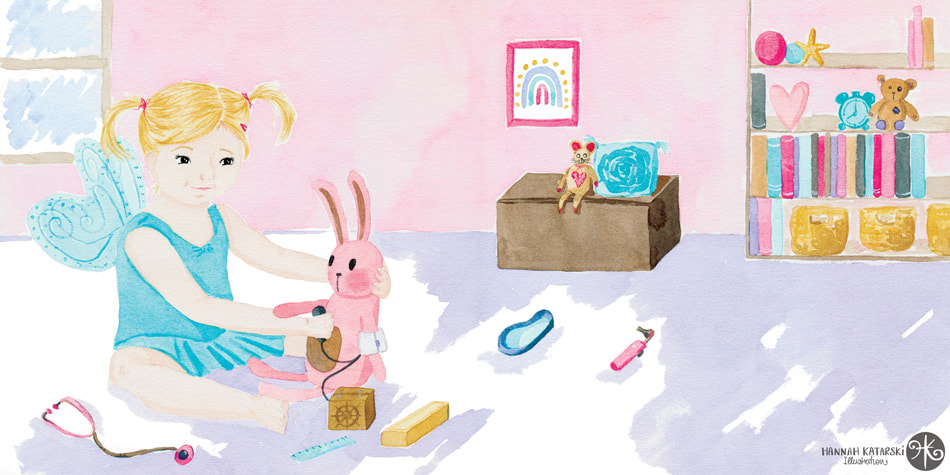

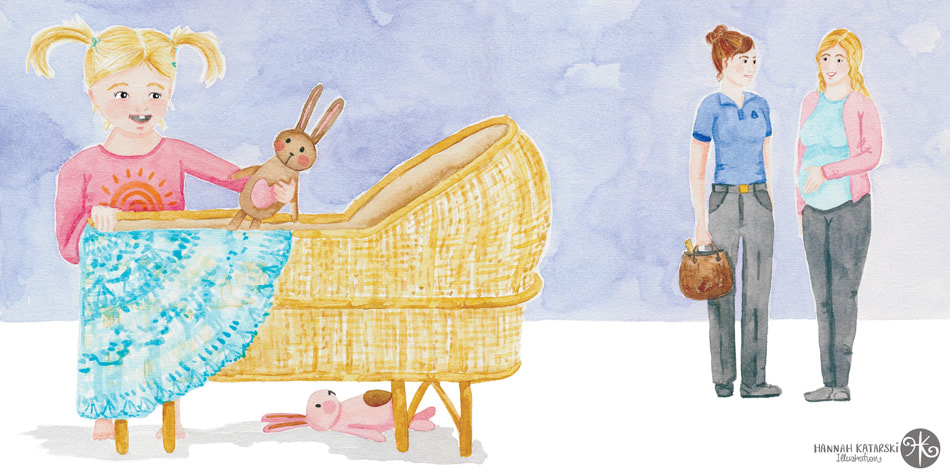



















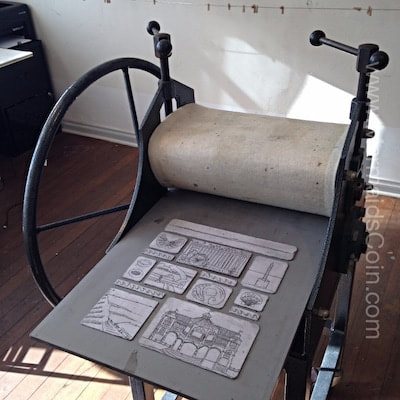
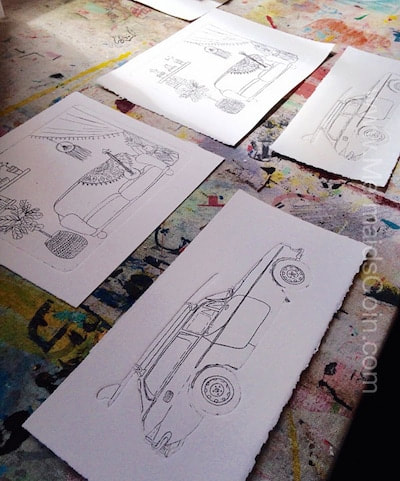

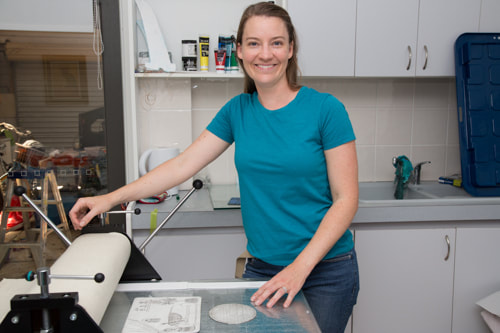








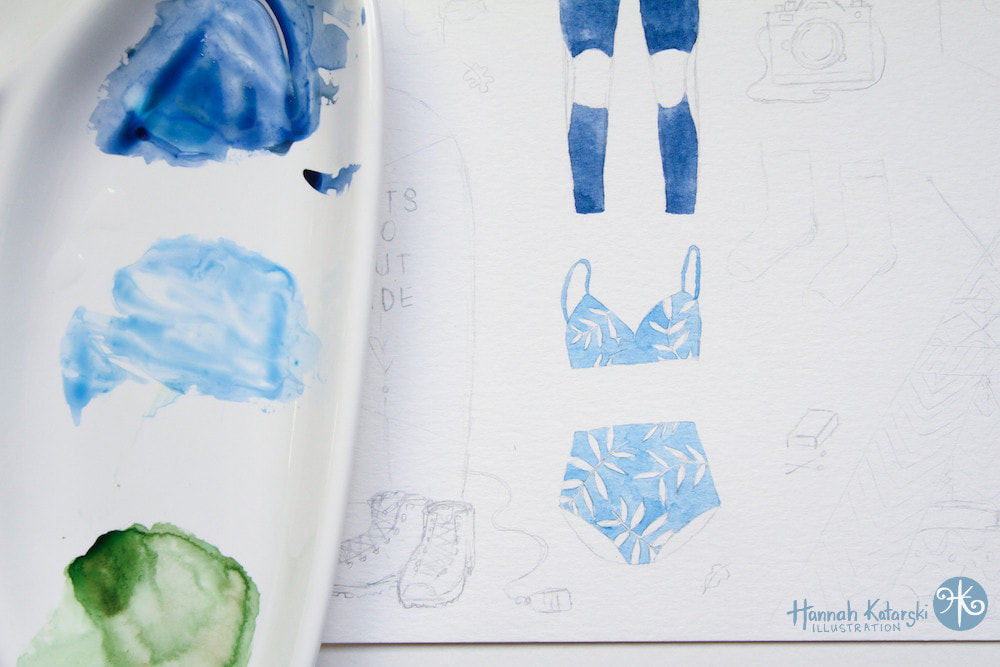









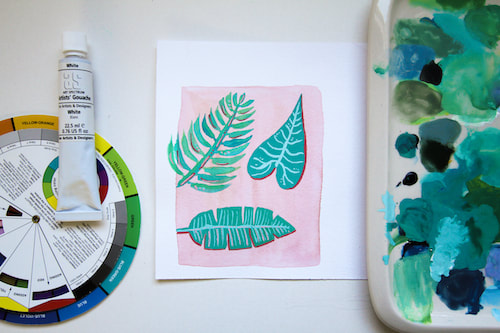










 RSS Feed
RSS Feed
